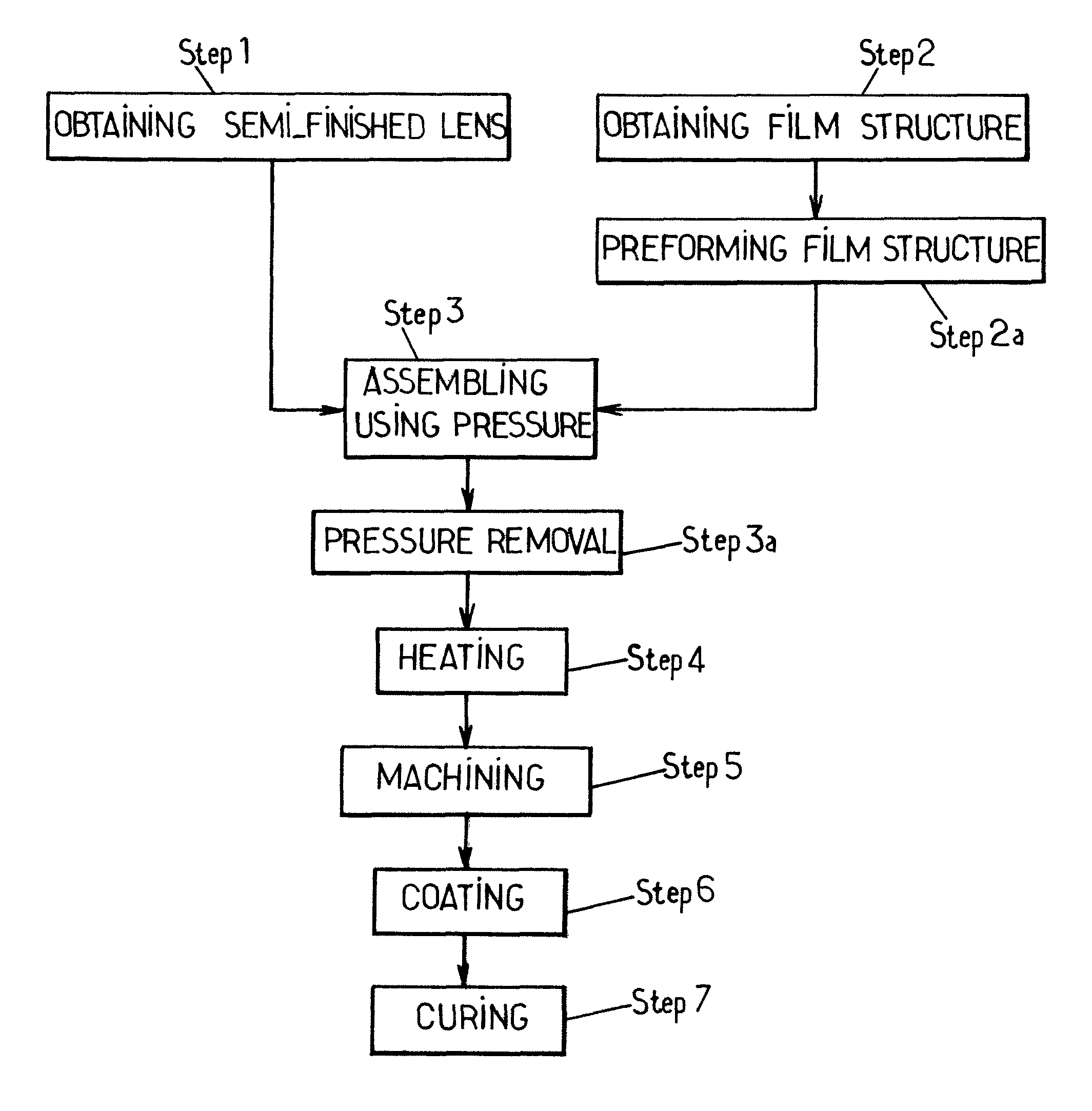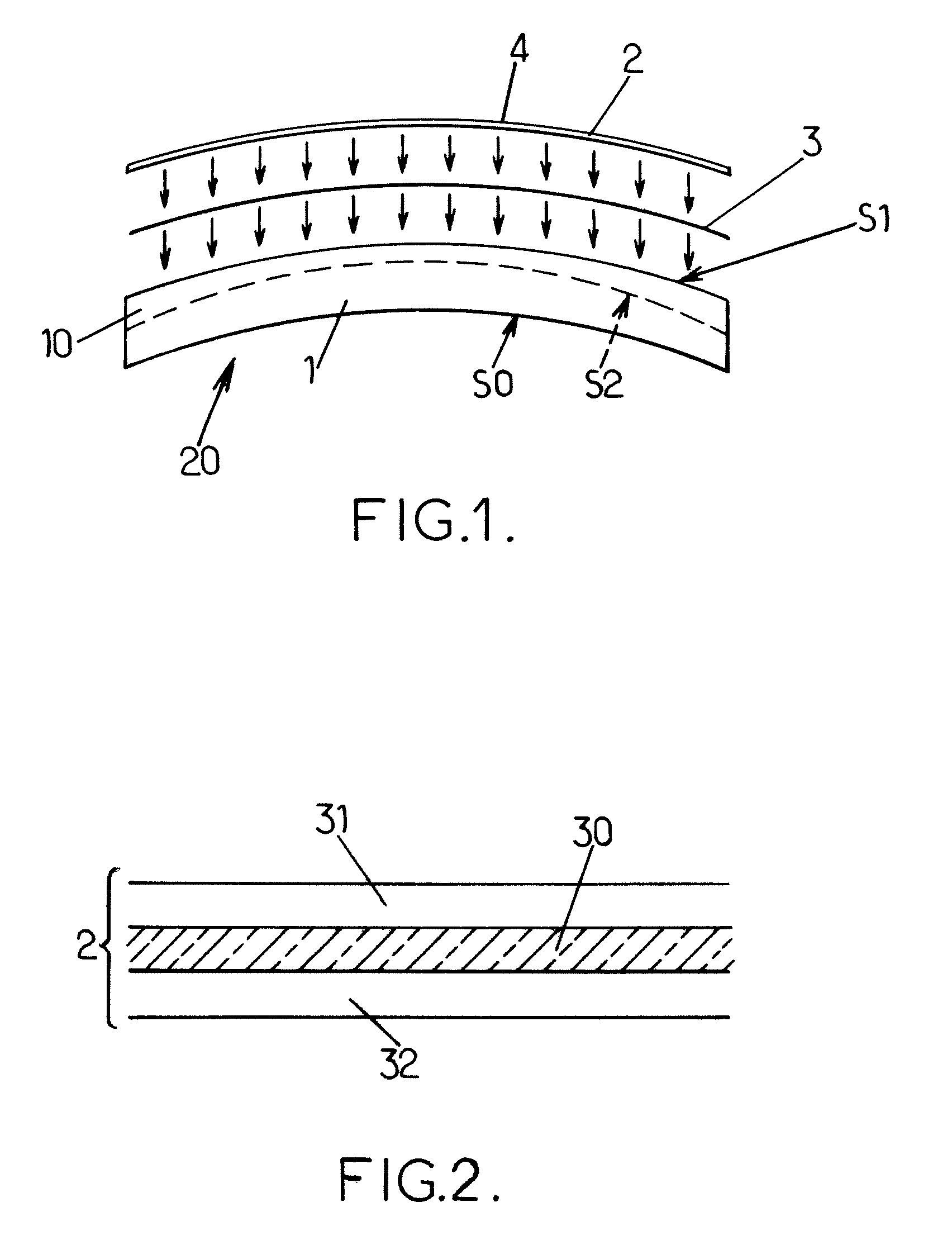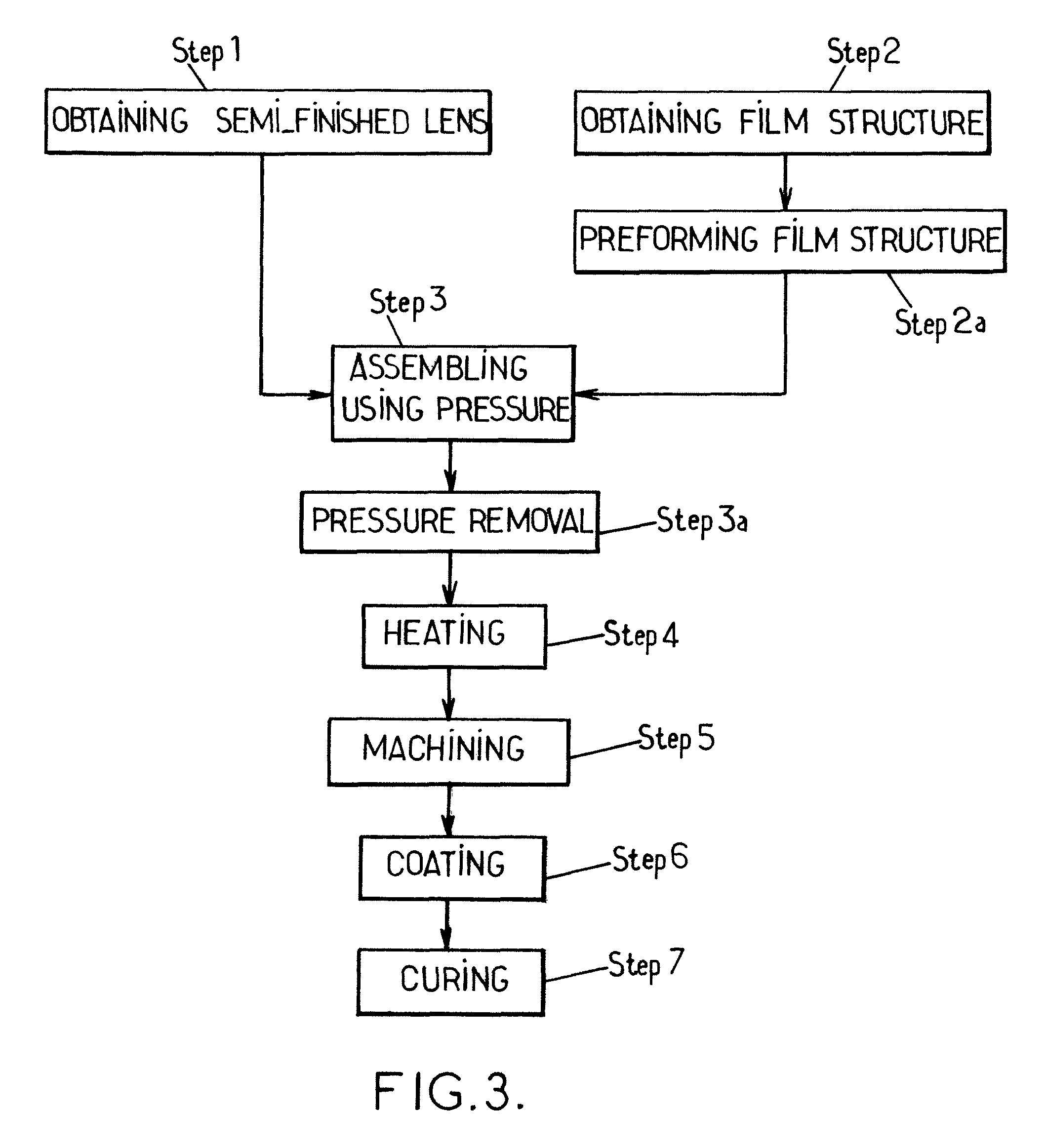Method for producing an ophthalmic lens comprising a base lens and a film structure
a technology of ophthalmic lenses and film structures, applied in the direction of lamination ancillary operations, chemistry apparatus and processes, domestic applications, etc., can solve the problems of ocular defects, image distortions or optical aberrations, discarding the final product, etc., and achieve the effect of improving production yield
- Summary
- Abstract
- Description
- Claims
- Application Information
AI Technical Summary
Benefits of technology
Problems solved by technology
Method used
Image
Examples
example 1
[0049]The adhesive system for the film lamination was described in patent application PCT / US09 / 62923. A 1.74 index semi-finished lens with 3.75 base was washed and UV treated with H bulb of Fusion UV equipment at the conveyer speed of 1.22 m / min (meter per minute) and then coated by latex and hot-melt adhesive. The polarized film with 4.0 base curve was also washed and caustic treated, and then was coated by the same latex. After drying of both latex and hot-melt adhesives, the film and lens were laminated in a lamination equipment at 1.38 bars and 80° C. for 2 minutes and 30 seconds. After lamination, the semi-finished film-laminated lens was then post-annealed in air oven at 100° C. for 6 hours. After that, the semi-finished lens was surfaced to plano profile with a center thickness of 1.5 mm and then further coated with a hardcoating cured at 100° C. for 3 hours. The obtained lens exhibits no lens center distortion seen by eye through reflection light based on cosmetics inspectio...
example 2
[0051]Example 1 was repeated except the lens base is 2.75 base and initially machined to prescribed power value of −1.0 diopter with same center thickness of 1.5 mm. The obtained lens exhibits no lens center distortion seen by eye through reflection light based on the same cosmetics inspection standard.
example 3
[0053]Example 1 was repeated except the post-assembling heating conditions were 100° C. for 3 hours. The obtained lens exhibits no lens center distortion seen by eye through reflection light based on the same cosmetics inspection standard.
PUM
| Property | Measurement | Unit |
|---|---|---|
| temperature | aaaaa | aaaaa |
| temperature | aaaaa | aaaaa |
| glass-transition temperature | aaaaa | aaaaa |
Abstract
Description
Claims
Application Information
 Login to View More
Login to View More - R&D
- Intellectual Property
- Life Sciences
- Materials
- Tech Scout
- Unparalleled Data Quality
- Higher Quality Content
- 60% Fewer Hallucinations
Browse by: Latest US Patents, China's latest patents, Technical Efficacy Thesaurus, Application Domain, Technology Topic, Popular Technical Reports.
© 2025 PatSnap. All rights reserved.Legal|Privacy policy|Modern Slavery Act Transparency Statement|Sitemap|About US| Contact US: help@patsnap.com



